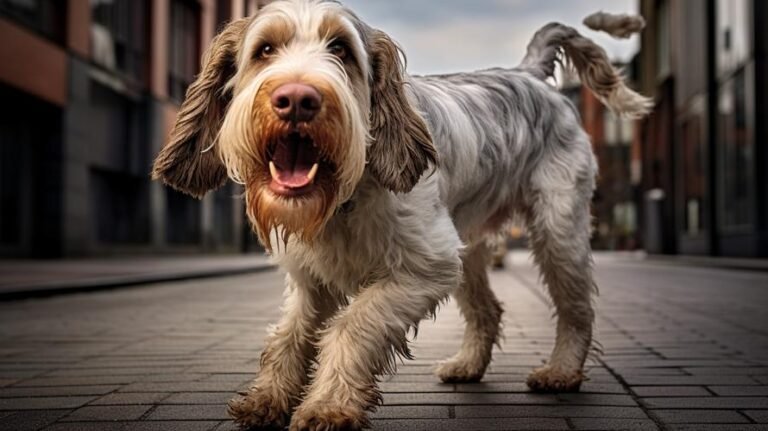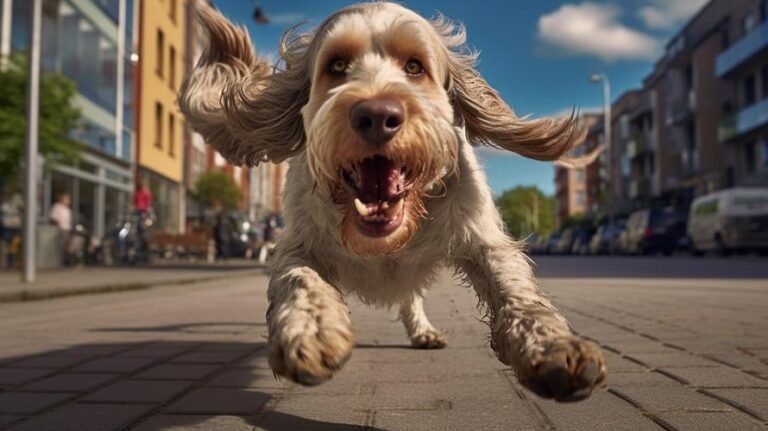When we think about Italian cuisine, dishes like lasagna, spaghetti and meatballs, and pizza usually come to mind. However, there’s another less known yet wholly Italian creature with unique dietary needs – the Spinone Italiano. This breed of dog, which traces its roots back to the Piedmont region of Italy, is known for its hearty constitution and robust health. But while these dogs can tolerate many types of food, there’s one item that has been made the subject of a great deal of debate: grains.
Did you know, Spinone Italianos didn’t exactly grow up on a diet of refined grains and processed dog foods? Our ancestors shared their meals with their dogs, which were mostly grain-free and composed of natural prey. That’s why it’s not surprising that a Spinone Italiano, even the urban ones in our time, may be more suited to a grain-free diet, not unlike what their ancestors enjoyed. However, before making significant changes to your dog’s diet, let’s delve deeper into why going grain-free might benefit your loyal, Italian friend.
Grains form a considerable part of most commercial dog food. But, this hasn’t always been the case. Commercial dog food didn’t hit the market until around the mid-1800s. Before that, dogs mostly consumed a diet of meat and vegetables. Now, if your Spinone Italiano is presenting with allergies, or persistent skin issues, it’s probably a good time to consider a grain-free diet.
Although grains are not inherently harmful to dogs, some dogs may be hypersensitive or allergic to certain grains. These dogs may experience severe itching, hot spots, ear infections, or hair loss if they eat grains. Also, dogs need nutrition from various sources, with grains contributing to a tiny part. Proteins, fats, and some minerals and vitamins often come from meat, and they are more crucial for a dog’s overall health.
By now, you may wonder, how will you be sure these symptoms pertain to grains and not a random allergy? That’s where the elimination diet comes in. By slowly reducing or eliminating grain from your Spinone Italiano’s diet, you can watch if the symptoms improve or disappear entirely.
However, going grain-free doesn’t mean you should overlook the essential aspect of a balanced diet. For dogs, their food must contain appropriate proportions of proteins, fats, and carbohydrates. Fruits and veggies, lean meats, eggs, and dairy should make up a majority part of their meals. A common myth is that grain-free dog food is low in carbohydrates, but that’s not always true. Many manufacturers replace grains with potatoes or peas that are high in carbs. So, ensure to do extensive research or consult with a vet before switching your dog’s food.
Another factor to consider when going grain-free is dog size. Spinone Italianos are a medium to large breed, and their nutritional needs may be different from small dog breeds. They may need more protein and fat to sustain their energy requirements and build stronger muscles. Their size also implies they have larger stomachs to fill, making grains an easier and cheaper filler. But cheaper doesn’t always equate to healthier. If grains complicate your dog’s health, reconsider its diet.
Before implementing any dietary change, always consult with a vet. A sudden change in diet can lead to digestive problems like diarrhea and vomiting. If your vet gives a green light, you can gradually introduce grain-free foods to your Spinone Italiano over a period of about a week.
In conclusion, every dog is unique and reacts differently to various food types. Whether or not to switch your Spinone Italiano to a grain-free diet depends upon the dog’s individual health needs and nutritional requirements. It’s crucial to be observant and attentive to any changes in your dog’s behavior, skin, or coat once you switch diets. Note that grain-free doesn’t always equal healthy. A balanced diet, regular exercise, and routine vet checkups are essential for your Italian comrade’s overall wellness.



